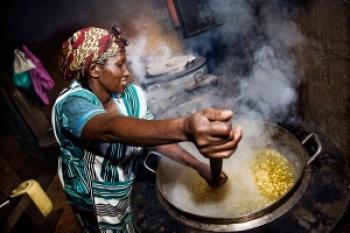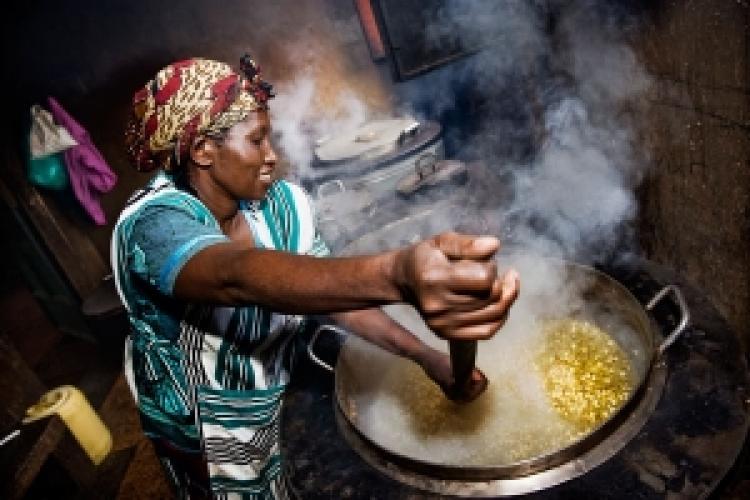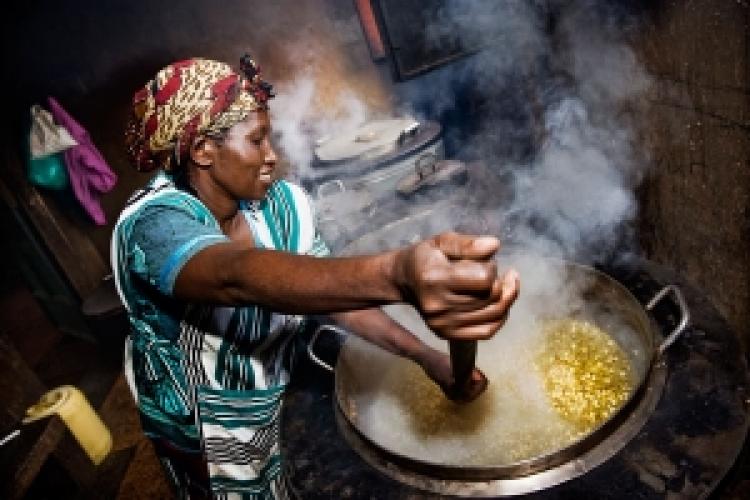For millions of families living in poverty worldwide, having an efficient stove can be a matter of live and death.
A good stove can make humble meals that nourish the whole family, inefficient stoves, however, waste fuel and increase their burdens.
In some countries, women face significant danger when gathering cooking fuel. In Uganda women are raped by roving bandits, and in Sri Lanka they are injured by land mines when they go deep into the woods to find firewood, according to a press release by the World Food Program (WFP).
The WFP and the United Nations have launched a global initiative to promote the use of energy-efficient stoves in developing countries.
WFP’s executive director, Josette Sheeren, said at a U.N. conference in New York, on Sept. 21, that the efficient stoves use up to a quarter less fuel, improving the lives of many young girls who have to walk miles, carrying heavy loads of firewood on their backs.
The campaign aims to provide 100 million households around the globe with more efficient stoves by 2020. In addition to improving quality of life for poor families, the stoves will also reduce carbon dioxide emissions, according to WFP.
Traditional stoves in many countries are often open and located inside homes causing unsafe “indoor air pollution.” This pollution kills an average of 1.6 million people every year, according to the World Health Organization.
Other concerns related to the issue of inefficient stoves are deforestation and soil erosion. While deforestation contributes to the carbon dioxide emissions, soil erosion aggravates the effects of floods.
A good stove can make humble meals that nourish the whole family, inefficient stoves, however, waste fuel and increase their burdens.
In some countries, women face significant danger when gathering cooking fuel. In Uganda women are raped by roving bandits, and in Sri Lanka they are injured by land mines when they go deep into the woods to find firewood, according to a press release by the World Food Program (WFP).
The WFP and the United Nations have launched a global initiative to promote the use of energy-efficient stoves in developing countries.
WFP’s executive director, Josette Sheeren, said at a U.N. conference in New York, on Sept. 21, that the efficient stoves use up to a quarter less fuel, improving the lives of many young girls who have to walk miles, carrying heavy loads of firewood on their backs.
The campaign aims to provide 100 million households around the globe with more efficient stoves by 2020. In addition to improving quality of life for poor families, the stoves will also reduce carbon dioxide emissions, according to WFP.
Traditional stoves in many countries are often open and located inside homes causing unsafe “indoor air pollution.” This pollution kills an average of 1.6 million people every year, according to the World Health Organization.
Other concerns related to the issue of inefficient stoves are deforestation and soil erosion. While deforestation contributes to the carbon dioxide emissions, soil erosion aggravates the effects of floods.




